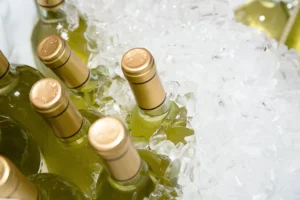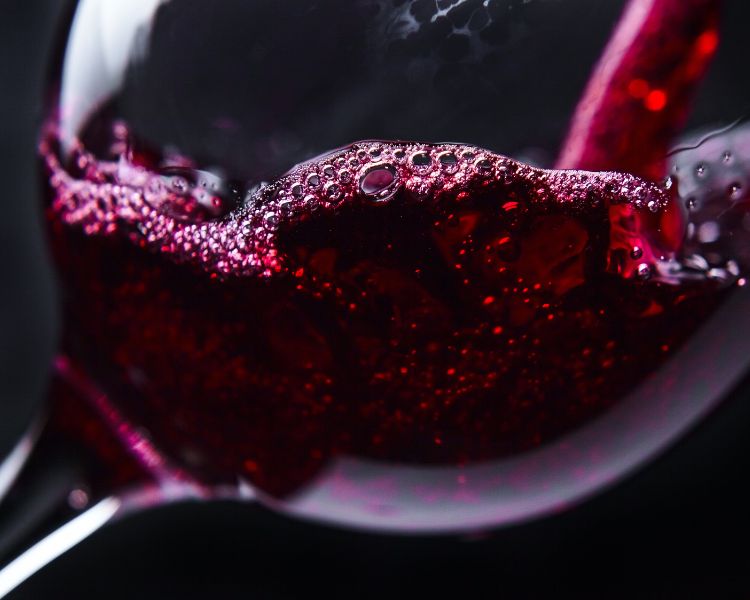How to properly store and serve white wines. temperature, storage
Nothing can ruin a fine glass of white wine quicker than improper storage and service. When it comes to enjoying this classic beverage, temperature plays an essential role in releasing the flavors and aromas of your favorite wines. If you’re not sure how to store or serve up your white wines correctly during special occasions, then you’ve come to the right place! In this blog post, we’ll explore the fundamentals behind why proper storage and serving temperatures are so important when dealing with white wines as well as provide a helpful overview of some of their most common characteristics. We’ve even included some FAQs about what you should keep in mind when choosing these refreshing beverages! Read on for everything you need to know about properly storing and serving delicious white wines!
Overview of White Wines and Their Characteristics
White wine comes in a wide range of styles and flavors, each with its own unique characteristics. But even with all the variations, there are some general guidelines you can follow when it comes to serving white wine. Firstly, make sure it is chilled to the right temperature. A wine that is too warm can taste flat and unappealing, while one that is too cold can mask the subtle flavors. Secondly, consider the wine’s characteristics when deciding on food pairings. Light-bodied white wines, for example, like Pinot Grigio or Sauvignon Blanc, complement lighter dishes like salads or fish. Richer, full-bodied white wines like Chardonnay, on the other hand, pair well with creamy, buttery sauces and heavier dishes. Use these simple wine serving guidelines to enhance your white wine drinking experience.
How to Store White Wines Properly?
Sipping a glass of chilled white wine on a hot summer day is one of life’s simple pleasures. But did you know that serving white wine at the proper temperature can make all the difference in the world? If the wine is too warm, it can taste flat and lifeless, while if it’s too cold, you can miss out on its nuanced flavors. The ideal temperature for serving white wine varies depending on the type of white wine, but a good rule of thumb is to serve the wine slightly cooler than room temperature. For example, a crisp Sauvignon Blanc should be served around 45°F, while oaked Chardonnay is best at 55°F. Following these wine serving guidelines can ensure you get the most out of your white wine and impress your guests with your knowledge of proper wine storage.
The Best Temperature for Storing White Wines

When it comes to serving white wine, temperature is key. While we often focus on the taste and pairing of wine, the temperature at which it is stored and served can also have a major impact on the overall experience. According to wine serving guidelines, the best temperature for storing white wines is typically between 45-50 degrees Fahrenheit. At this temperature, the flavors and aromas of the wine are enhanced, providing a crisp, refreshing taste that is perfect for warmer weather or light entrées. So, the next time you pour yourself a glass of white wine, take a moment to consider the temperature and how it may be affecting your enjoyment of this delicious beverage.
Tips for Long-term Storage of White Wines
For those who love white wine, proper storage is key to ensure its taste remains just as fresh as the day it was bottled. Long-term storage is especially important when you have a special bottle that you want to save for a special occasion. To ensure your white wine tastes at its best, keep it in a cool, dark place, away from direct sunlight. The optimal temperature is between 45 and 50 degrees Fahrenheit. Do not store white wine in a refrigerator for more than a few days as it will dry out the cork and cause the wine to age prematurely. Remember to chill the wine to the perfect temperature before serving, about 30 minutes in the refrigerator just before serving. By following these simple wine serving guidelines, you can enjoy your white wine at the perfect temperature any time, whether it’s for a special occasion or just for a relaxing glass at home.
Serving White Wines at the Right Temperature

Serving white wine is an art form that requires attention to detail. One particular detail that can make or break your wine experience is the temperature of the wine. Wine temperature is often overlooked, but it’s crucial to get it right in order to fully experience the flavors and aromas of the wine. According to wine serving guidelines, white wine should be served at a temperature between 45-50 degrees Fahrenheit. This temperature range brings out the best in white wine, allowing its unique flavors to shine. So next time you open a bottle of white wine, make sure to pay attention to the wine temperature and elevate your wine experience to the next level.
Whether you’re a wine connoisseur or just a casual wine drinker, it’s always helpful to have some guidelines when it comes to serving white wine. One of the most important things to keep in mind is the temperature. Chilled white wine can be incredibly refreshing on a hot summer day, but serving it too cold can mask some of the wine’s subtle flavors. On the other hand, serving white wine that’s too warm can make it taste dull and lifeless. Generally, it’s best to serve white wine between 44-57°F (7-14°C), but be sure to check the specific wine’s label for ideal serving temperature. And don’t forget about the serving guidelines – a standard serving size is 5 ounces, or about one-third of a typical wine glass. Cheers!
Tips for Paring Different Types of Food with White Wine
Pairing different types of food with white wine can be a daunting task. However, with a little bit of knowledge, you can easily bring out the best flavors in both the food and the wine. One general rule of thumb is to pair light dishes with lighter wines and heavier dishes with full-bodied wines. For example, a light seafood dish might pair well with a crisp and refreshing Sauvignon Blanc, while a creamy pasta dish could be complemented by a buttery Chardonnay. Another key factor to consider is the flavors in the dish. A spicy dish may pair well with a sweeter white wine, while a citrusy dish may be best complemented by a dry white wine. When in doubt, don’t be afraid to experiment and try different combinations to find the perfect pairing for your taste buds. With a little bit of practice, you’ll be an expert at pairing white wine with any type of dish.
Overall, white wines are beloved around the world for their subtlety and complexity of flavor. When storing and serving them, it’s important to keep in mind that white wines need temperatures that are usually cooler than red wines – the trick is to store your wine bottle at the right temperature so that your flavor profile can really come out when it comes time to drink. Finishing off a meal knowing you have chosen a wine that works well with the food being served makes for an even better experience. You’ll also find that white wines age well, which makes them great while entertaining or for extended use over time. Whether you’re trying something new or bought a staple you’ve had before, there’s nothing quite like savoring a glass of carefully selected white wine.
FAQs>
1.What’s the best temperature for serving white wines at home?
If you’re a fan of chilled white wines, it’s important to serve them at the right temperature for maximum enjoyment. Most experts recommend serving white wines between 45-50 degrees Fahrenheit, which can be achieved by placing the bottle in the refrigerator for a few hours before opening. This cool temperature helps highlight the wine’s refreshing acidity and fruity flavors, while balancing any sweetness or oakiness. It’s worth noting that some white wines, such as full-bodied Chardonnay or aged Riesling, may benefit from being served slightly warmer to bring out their complex aromas. No matter your preference, experimenting with different serving temperatures can help you find the perfect balance of flavor and refreshment in your favorite white wines.
2.How long can I keep an opened bottle of white wine stored in the refrigerator?
White wine is a delicate and refreshing beverage that many people enjoy, especially when paired with a delicious meal or served as a standalone drink. However, it can be frustrating when you open a bottle of wine and don’t finish it all in one sitting. So, how long can you keep an opened bottle of white wine stored in the refrigerator? The answer to this question depends on a few factors such as the type of wine, the storage conditions, and how long the wine has been open. Generally speaking, a bottle of white wine that has been opened can be stored in the refrigerator for up to five days. After that, the quality of the wine may begin to deteriorate, and it may start to lose its flavor. But don’t worry, with proper storage and a little bit of knowledge, you can make sure that your white wine stays fresh and delicious for as long as possible.
3.Is it better to store my white wine bottles upright or on their sides?
When it comes to storing white wine, there is often debate on whether to store the bottles upright or on their sides. While both methods have their benefits, storing white wine bottles on their sides is generally preferred. This is because it allows for the wine to come into contact with the cork, which helps to keep it moist and prevent it from drying out. If the cork were to dry out, air could leak into the bottle and cause the wine to spoil. Storing the bottles on their sides also helps to prevent the wine from being exposed to light, which can cause it to age prematurely. By storing your white wine bottles on their sides, you can ensure that they will age properly and be ready to enjoy when the time is right.



